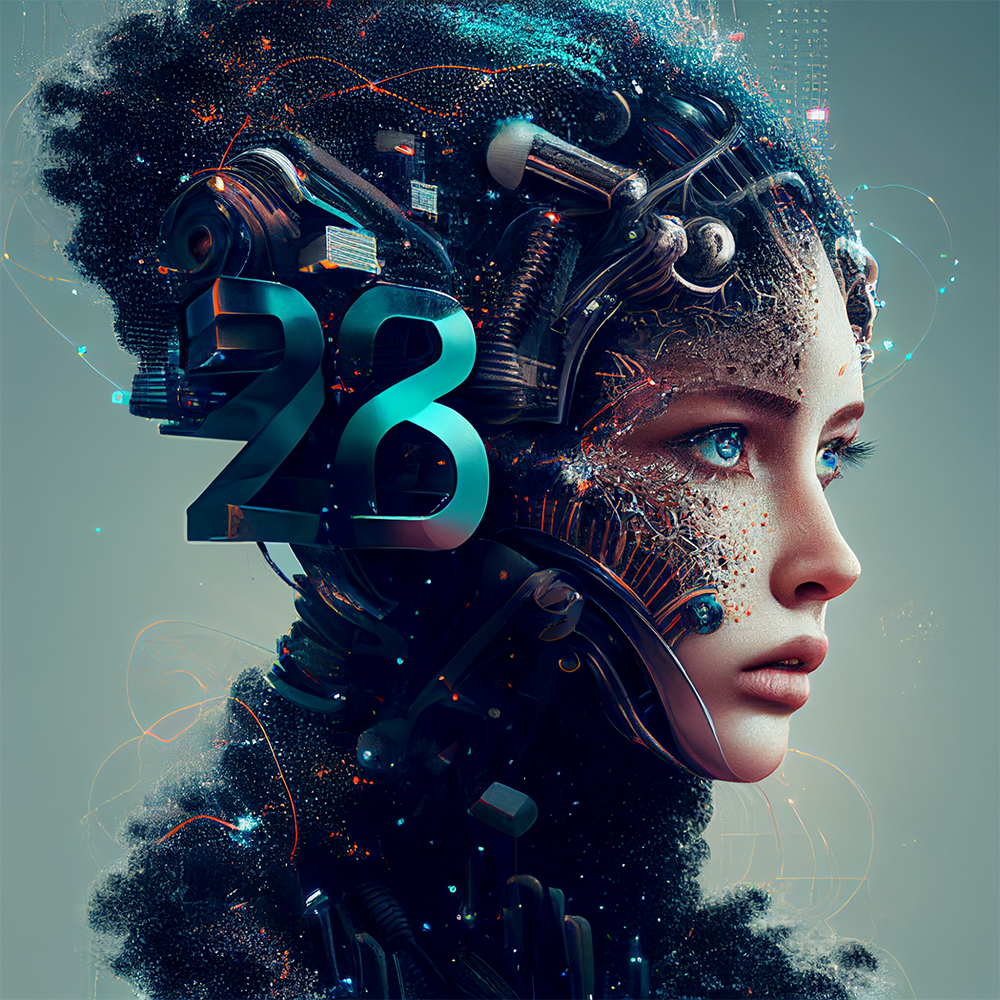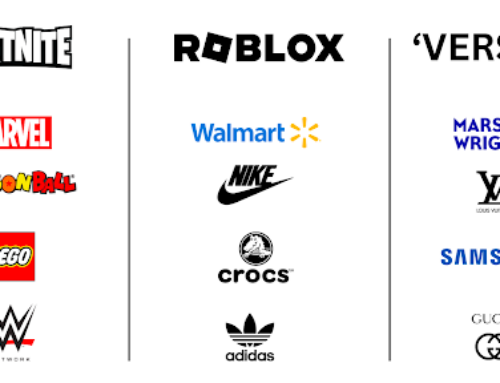The 5 Experiential Marketing Trends That Will Redefine 2023
At the heart of experiential marketing is one simple idea – instead of being passive consumers, people can actively participate in branded experiences (and even brands themselves). Unlike traditional marketing, experiential marketing is relevant, meaningful, interesting, and above all meets people where they are.
With newer technologies allowing for greater personalization, the marketing world is being turned on its head. Generative AI. NFTs. Virtual worlds. Hybrid events. Smart contracts. Beneath the hype, these technologies are already transforming how global brands engage with their audiences. And we’re just getting started. Let’s take a look at the five biggest experiential marketing trends to watch in 2023.
1. Generative AI Powers Entirely New Experiences (While Exploding Old Categories)

If there’s one “big ticket” experiential marketing trend to look out for in 2023, generative AI – a type of AI that is focused on generating new content, such as text, images, or audio – is it. Tools like Midjourney or Stable Diffusion are a hit with curious users, but generative AI isn’t just for creating funny images to share with your friends. Generative AI is set to be the most disruptive technology you’re likely to see grow this year. (And we’ve used it here, too, asking Midjourney to create an image that illustrates “experiential trends in 2023.”)
For one, not all generative AI will be about producing novel images. ChatGPT is another example of generative AI – a new chatbot wowing the world with its conversational prowess.
ChatGPT has been used not only to write articles or power better chatbots for customer service purposes. It’s nimble enough to create a fictitious passage in the Bible on how to remove a peanut butter sandwich from inside a VCR, a letter explaining to a little boy that Santa isn’t real, or a whole college essay. After gaining its first million users in only five days, it’s become the fastest-adopted platform ever.

What will the rise of professional-looking original content generated on demand mean for the big players? Search engine optimization (SEO) is about to be turned completely on its head, as Google scrambles to keep search results relevant in a Red Queen’s race where trillions of dollars are at stake. Everything from traditional marketing and customer service, to academic honesty and “fake news,” is now in question.
With that in mind, Generative AI is set to collide with another experiential marketing trend to watch for in 2023…
2. NFT Marketplaces Give More Power to Creators

Did you know that Snapchat is going to start paying popular creators that use its Lens Studio to create filters for the app? Snapchat has gained a lot of popularity and value off the back of freely-made lenses over the years, and it shows how much the company recognizes the value these artists bring to their platform if they’re considering paying them for something they were already doing on their own.
As the metaverse becomes more and more realized, and people spend more and more of their time there, the intrinsic value of digital items – like these lenses, for example – will only solidify. As people start to value digital creations more, companies stand to benefit from plumbing the existing talent they already have among their user community. It may seem like Snapchat is paying these creators something long overdue (and there’s an argument for that), but it’s more like they’re welcoming them onto the ground floor of the emerging metaverse. As Alan Smithson pointed out in a recent interview:
The fact that so many creators love making this stuff so much, they made it so fun and so simple and so easy that people just do it for free, and that’s wonderful. But Snapchat has benefited from that. Brands have benefited from it. The individual creators have not so much benefited. And to put it in perspective, (NFT marketplace) OpenSea has written checks to creators in the order of something like 1,000 times more than SNAP this year. But I think Snap’s doing the right thing; it’s starting to really work on paying creators now, and I think that’s great.
This won’t just affect Snapchat. NFT marketplaces could become as populous as artist alleys at conventions, or creator marketplaces like Etsy. It could even be a possible solution to the concerns people have around generative AI, namely when it comes to how artists whose work has been examined by the AI for it to learn its skills could be compensated. With the MetaVRse Engine, practically anyone could create a digital tchotchke they could turn into a profitable product.
The metaverse will need a lot of assets as the doors start opening; the best thing platforms eager to get in on it can do is welcome their vast, creative user base to the table.
3. New Virtual Worlds for Branded Fandoms

Taking advantage of user goodwill isn’t just limited to paying creatives. It also means building new environments to foster fandoms.
For instance, people around the world love Nike, but this love takes many forms. Some people collect vintage shoes they buy off other collectors. Some customize their shoes as a way of expressing themselves. Some might even run a Nike appreciation blog or message board. None of these exchanges equal new money directly into Nike’s bank account. At least, not right away.
Roblox might be an even better example of a business that thrives on fandom. A massive online multiplayer experience, Roblox doesn’t cost a single red cent to start playing. They make their money on in-game purchases of skins and items. They trust that their users will have enough fun in their world that they’ll naturally want to invest in more ways to have fun later. (“Later” being the operative word.)
Brands are going to want to have spaces in the metaverse, but they’ll also need to learn that those spaces aren’t going to mean a 1:1 case of entry = profit. This is the essence of experiential marketing. Companies will have to build something people will want to visit first, then trust that they’ll find ways to invest in the space later out of enthusiasm. Why not combine that existing enthusiastic talent pool with NFTs and 3D rendering power?
Nike seems to have learned that lesson early, partnering with Roblox to open Nikeland in their cyberspace. There’s no entry fee or minimum purchase; it’s just a space where Nike fans on Roblox can gather and enjoy the brand. This is the mentality we should all strive for when building the metaverse. Make someplace fun first, ensure the fans are happy, and you have a platform ripe for brand engagement.
4. Hybrid Events Where Digital Attendees are No Longer Second-Class Citizens

Another popular way to give fans something to flock to will be virtual/real hybrid events such as concerts. Alan recounted one such example from late last year, at an art exhibit in New York:
One of the big pieces of art that just drew me to it was a Biggie Smalls painting. I went over to it and I read the little plaque, and it said, in the center dot of the crown on Biggie’s head, there’s an NFC chip. If you access it, there’s a custom song that was written and sung by an AI algorithm. I got my phone. I had to stand on my tippy toes, reach up – way up – to touch the dot, and all of a sudden, this NFC opens a link to a YouTube track, and I start hearing a Biggie song that never existed in reality. There’s a combination of digital and physical art, a digital connection using NFC. And then it’s purchased as an NFT; you’re using generative AI to create the content, the additional content to this.

These will be important marketing tools in part because it fulfills what we described above – giving fans a place to gather and simply enjoy material they already identify with. But making it hybrid is important too. By making events that one can attend across a spectrum of reality, non-metaverse converts who might be used to “real-life” concerts might be exposed to XR for the first time, or at least the first time in a way that might speak to them. (Augmented reality lyrics? Unique virtual goodies in the digital version?)
TL;DR: truly hybrid events draw hybrid attendees. That’s where cross-pollination is possible.
5. Smart Contracts Are the Glue That Holds it All Together

Building a metaverse people want to populate is the hardest part of this endeavor. But if we do it right the first time, it eventually becomes the easy part. What becomes the new ‘hard part’ after that? The logistics behind running it all. That’s where the blockchain and smart contracts will come in. Alan puts it so:
Underlying TheMall’s infrastructure is a smart contract that says you own the rights to put up a virtual world in this space. You just have to use the MetaVRse Engine. Then, when you put your chain – your NFT number – in, it validates that you own it.
We’re using smart contracts and NFTs for the leasing of mall spaces, and also for assets within TheMall. I transfer the NFT to you for a certain amount of time, in exchange for a certain amount of money. That’s all done through a smart contract. Once the lease expires, then it just pulls it back and deletes your store, and puts up a “coming soon” sign.
Having cleared its initial hype cycle, blockchain-backed asset ownership is widely acknowledged as a key cornerstone of the metaverse. We even use it as a fundamental aspect of TheMall – contracts automatically renew and/or expire underneath the visible parts of the space, which means new property can be available instantaneously, without a human having to tear down the virtual infrastructure first. Mistaken lapse of the contract? It can be reinstated and rebuilt just as easily.
This is the technology being built into the bones of the metaverse itself. It’s complex work, but it’s necessary work, and we should start to see forward-thinking companies laying their tracks down sooner than later.
The Big Picture: To Be Effective, Experiential Marketing Needs to Be Fun
Experiential marketing means focusing on the fun factor today, and worrying about ROI later. The Internet didn’t become the fastest form of communication humanity has ever adopted because users leapt to invest time and money into it – it grew naturally, from people finding fun ways to spend time there. As the third generation of the web, the metaverse follows a similar pattern. Let people have fun and create, and they’ll build the future with you.






